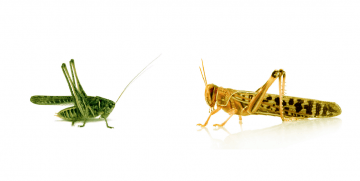From Scientia:
 Cancer is a global health concern. There are over 100 types of cancer, which taken together, kill more than 10 million people across the world each year. Although localised cancers can be treated successfully through excision or localised radiotherapy, metastatic cancers spread throughout the body and are incurable, eventually leading to death. Once cancer cells have metastasised, they grow aggressively and are resistant to virtually all treatments. Despite enormous funds and dedicated efforts put into cancer research over the last half-century, half of all people diagnosed with cancer still die from their disease.
Cancer is a global health concern. There are over 100 types of cancer, which taken together, kill more than 10 million people across the world each year. Although localised cancers can be treated successfully through excision or localised radiotherapy, metastatic cancers spread throughout the body and are incurable, eventually leading to death. Once cancer cells have metastasised, they grow aggressively and are resistant to virtually all treatments. Despite enormous funds and dedicated efforts put into cancer research over the last half-century, half of all people diagnosed with cancer still die from their disease.
Traditional thinking in cancer therapy accepts that cancer is incurable once it spreads. There are billions of cells in a tumour and it only takes one cell to randomly mutate into a form with increased tolerance to survive treatment and then to clone itself. Cancer therapies have focussed on multi-drug chemotherapies to tackle the progression of new cancers as they occur, or to develop drugs that target resistance-associated mutations. However, cancer cells have proven resistant to all high-tech medical innovations to date. Researchers have not understood exactly what cells or mechanisms that cause this remarkable resilience amongst cancer cells. Dr Kenneth Pienta at the Johns Hopkins School of Medicine, USA, is leading an amazing and bold line of discovery in cancer research. Critically, his team now believes that polyaneuploid cancer cells (PACCs) are the master mediators of this resilience and provide an adaptive way for tumours to survive almost any type of stress.
…Two key questions across all types of cancer research are, why do some cancer cells become immune to treatment and why do they metastasise? Returning to thinking about cancer cells as an ecosystem paradigm, discussions with cancer biologist Dr Sarah Amend and ecologist Dr Joel Brown turned to the example of short-horned grasshoppers. When food is abundant, grasshoppers are typically green and healthy solitary specimens, but in times of nutritional stress, the next generation becomes yellow locusts, growing wings and changing their behaviour to become more gregarious, swarm-forming animals that travel to seek new food sources. Once resources are again abundant, the next generation once again transmogrifies back to the grasshopper morph.
More here.
